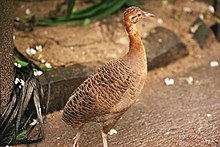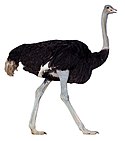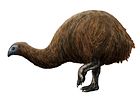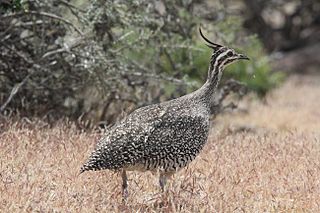
Tinamous are members of the order Tinamiformes, and family Tinamidae, divided into two distinct subfamilies, containing 46 species found in Mexico, Central America, and South America. The word "tinamou" comes from the Galibi term for these birds, tinamu. Tinamous are the only living group of palaeognaths able to fly, and were traditionally regarded as the sister group of the flightless ratites, but recent work places them well within the ratite radiation as most closely related to the extinct moa of New Zealand, implying flightlessness emerged among ratites multiple times. Tinamous first appear in the fossil record in the Miocene epoch. They are generally sedentary, ground-dwelling and, though not flightless, when possible avoid flight in favour of hiding or running away from danger. They are found in a variety of habitats, ranging from semi-arid alpine grasslands to tropical rainforests. The two subfamilies are broadly divided by habitat, with the Nothurinae referred to as steppe or open country tinamous, and the Tinaminae known as forest tinamous.

The great tinamou is a species of tinamou ground bird native to Central and South America. There are several subspecies, mostly differentiated by their coloration.

The variegated tinamou a type of tinamou commonly found in moist forest lowlands in subtropical and tropical regions of northern South America.

The Andean tinamou is a tinamou, found commonly in high-altitude shrubland, in the Andes of South America.

The puna tinamou also known as Pentland's tinamou, is a member of the most ancient groups of bird families, the tinamous. This species is native to southern South America. The binomial name of the species commemorates the Irish natural scientist Joseph Barclay Pentland (1797–1873) by Nicholas Aylward Vigors in 1837. The IUCN list this species as Least Concern, with an occurrence range of 590,000 km2 (230,000 sq mi).

The highland tinamou or Bonaparte's tinamou is a type of ground bird found in montane moist forest typically over 1,500 m (4,900 ft) altitude.

Berlepsch's tinamou is a type of ground bird found in moist forest in northwestern Colombia and northwestern Ecuador.
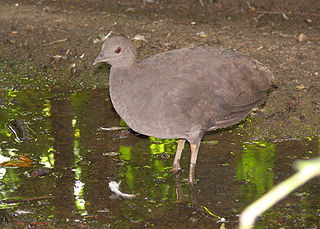
The cinereous tinamou, also known as brushland tinamou, is a type of ground bird found in swamp and lowland forests in northern South America. They have some localized names that have been used by the indigenous people such as in Amazonas where they are called inambu-pixuna, and in Pará, Brazil where they are called nambu-sujo. Also, throughout their range they are called inhambu-preto. Cinereous tinamous have been around for many centuries. They are part of the oldest families of the world today and have fossils discovered dating back tens of millions of years. Their quick reflexes play a role in their ability to survive.
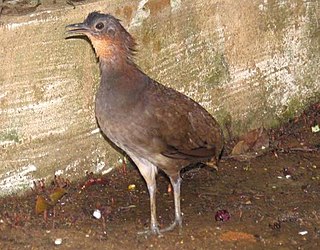
The Brazilian tinamou is a type of tinamou found in tropical moist lowland forest in regions of Amazonian South America.

The thicket tinamou or rufescent tinamou is a type of tinamou commonly found in moist forests in subtropical and tropical central Mexico.

The slaty-breasted tinamou or Boucard's tinamou is a type of tinamou commonly found in lowland moist forests of Mexico and Central America.

The Choco tinamou or Chocó tinamou is a type of tinamou found in lowland forest and montane forest in subtropical and tropical regions of Colombia and Panama.

The small-billed tinamou is a type of Tinamou commonly found in dry savanna in Amazonian South America.

The brushland tinamou is a type of tinamou commonly found in high-altitude dry shrubland in subtropical and tropical regions of southern South America.

The curve-billed tinamou is a type of tinamou commonly found in high-altitude grassland and shrubland habitats in the Andes of South America.

The huayco tinamou, also known as waypu (Quechua), is a species of bird found on grassy mountain ridges in the Andes of Bolivia and Argentina.

Tinamotis is a genus of birds in the tinamou family.

Eudromia is a genus of birds in the tinamou family. This genus comprises two crested members of this South American family.

Nothura is a genus of birds in the tinamou family. This genus comprises five members of this South American family.

Tinaminae, the forest tinamous, is one of two subfamilies of the family Tinamidae, the other being Nothurinae. Tinaminae has more species than the other subfamily, containing 29 species in three genera:
